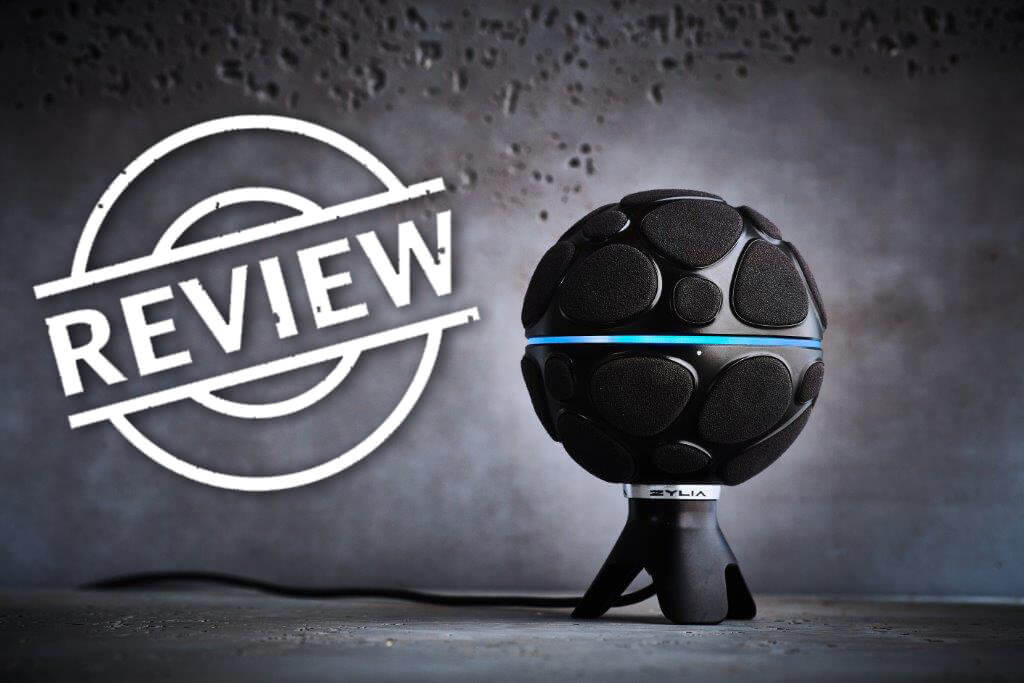Bands have made room recordings since the beginning of…well, recording. However, so many good recordings could have been better, with a better mix, or even the possibility of fixing that one flub if you could just separate the parts. Zylia has come up with an innovative solution that’s very interesting with their ZM-1 unit.
With an array of 19 condenser microphones spread across its spherical shape, a single LED ring across its “equator” lights up indicating its functionality. Included is a table top stand, equipped with a threaded microphone stand. It’s detachable as well, allowing for mounting on a tripod or mic stand of choice. It connects via USB, and is compatible with Mac, Windows and Linux systems.
Now it will require some extra software to get everything going, all of which is available via Zylia’s website. After setting it up and calibrating it, just place the little unit in the middle of your recording space. Then in the software, select what kind of instruments to be recorded. After, it simply asks you to play an 8-second bit on each instrument so it can “find” the individual instruments in the space. It might be noted that if there are two guitar players (or a single guitarist with a dual-amp setup) you should place them across from each other to give some better separation.
Overall, it picked up the instruments very well. We were actually surprised that it wasn’t a gimmick. Sound wise, it featured none of the usual “hollowness” usually associated with poorly set-up room mic situations, and the included software helped tweak things quite easily overall. It’s one of those “the more you use it, the easier it becomes” situations. It may take some moving of amps and or players around to get a specific desired mix, but that’s true of any situation.
Comparing it to having a simple recorder in the space capturing just a stereo signal, is like comparing VCR to a Blu-ray player. Now there is some bleed over, so it’s not as pristine as say a multi-track session in Pro Tools, with each instrument isolated and recorded with their own mic. Ever have a room recording where the vocal or lead guitar was too low in the mix? Now, lower volume sources can be bumped up to sit in the mix better. The final product we ended up with was somewhere between a basic stereo room recording, and a full blown multi-tracked session. But that halfway point isn’t falling short in any way, considering the simplicity and overall sound quality. And for capturing a live feel, this could be an easy and indispensable way to record on-the-fly.
The track separation is quite good, and even the minimal bleed can be tweaked enough by other DAW editing software after the fact. Using it to record live sets at gigs is a great application, as it can pick up the instruments and mix in crowd response, meaning recording that “live” acoustic EP at the local coffee shop is easier than ever, and being able to mix more than left and right channels is a godsend.
It’s also designed to work capturing audio for 360 environments, for both Facebook & YouTube. So, making natural, enveloping soundscape recordings is a whole lot easier.
Overall, it’s fairly well executed, it keeps things simple, while delivering recordings that can later be re-mixed far better than anything else that’s currently available. It may take a bit getting used to in order to fit in with your specific needs, but once set up, it could easily live in the middle of a practice space permanently for on-the-spot recordings.
PROS:
Interesting design, great audio capture device
CONS:
Slight learning curve
STREET PRICE:
$599
